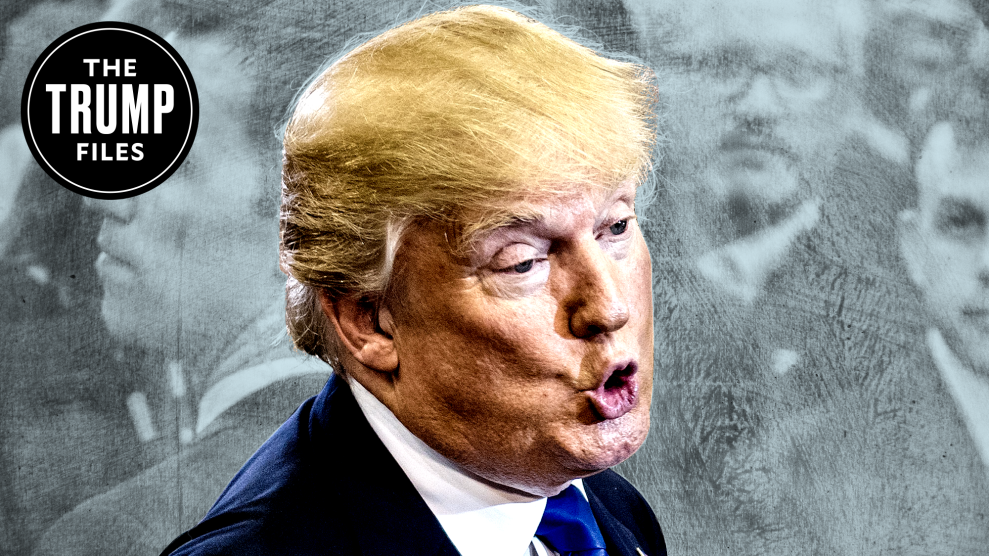
This post was originally published as part of “The Trump Files“—a collection of telling episodes, strange but true stories, and curious scenes from the life of our current president—on September 12, 2016.
There’s seemingly nothing more important to Donald Trump than his net worth. The tycoon’s image is based on having over-the-top wealth, so he often pads his net worth by as much as billions of dollars—and sued a journalist who caught him in the act.
In fact, Trump has been doing this ever since he first started appearing in the press as a fledgling developer. His front-page debut came in 1973, thanks to a landmark housing discrimination suit the Justice Department filed against Trump and his father for trying to bar black applicants from their buildings and offering black renters worse terms. (The Trumps settled, agreeing to take steps to combat discrimination in exchange for not having to admit any wrongdoing.) Three years later, the New York Times made him the subject of a gushing profile that sexed up the 30-year-old developer—”he looks ever so much like Robert Redford”—and parroted his claim that he was worth “more than $200 million.”
As Washington Post reporters Michael Kranish and Marc Fisher charitably put it in their new book, Trump Revealed, the source of that figure was “unclear.” The New Jersey Division of Gaming Enforcement, which later investigated Trump when he sought a casino license, found that Trump’s income in 1976 was a grand total of “$24,594, in addition to some payments from family trusts and other assets,” as Kranish and Fisher wrote. A year earlier, while Trump was trying to buy the Commodore Hotel from the bankrupt Penn Central railroad, “Penn Central negotiators had estimated the Trump family holdings at about $25 million, all of it under [his father] Fred’s control,” Kranish and Fisher wrote.
Trump did finally make it to the big time in 1982, when he was featured in Forbes‘ list of the 400 richest Americans. Forbes‘ estimate of his worth? $100 million.

















